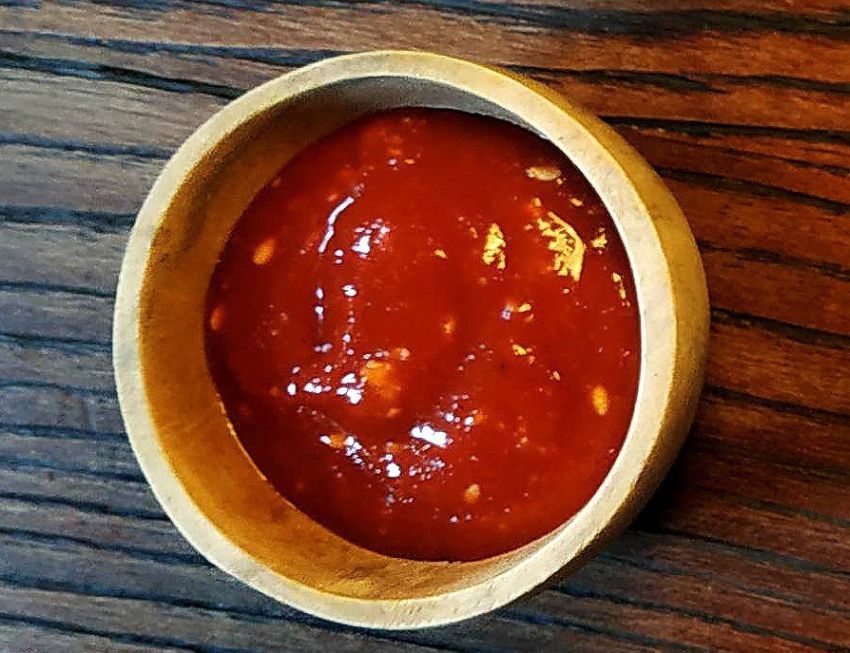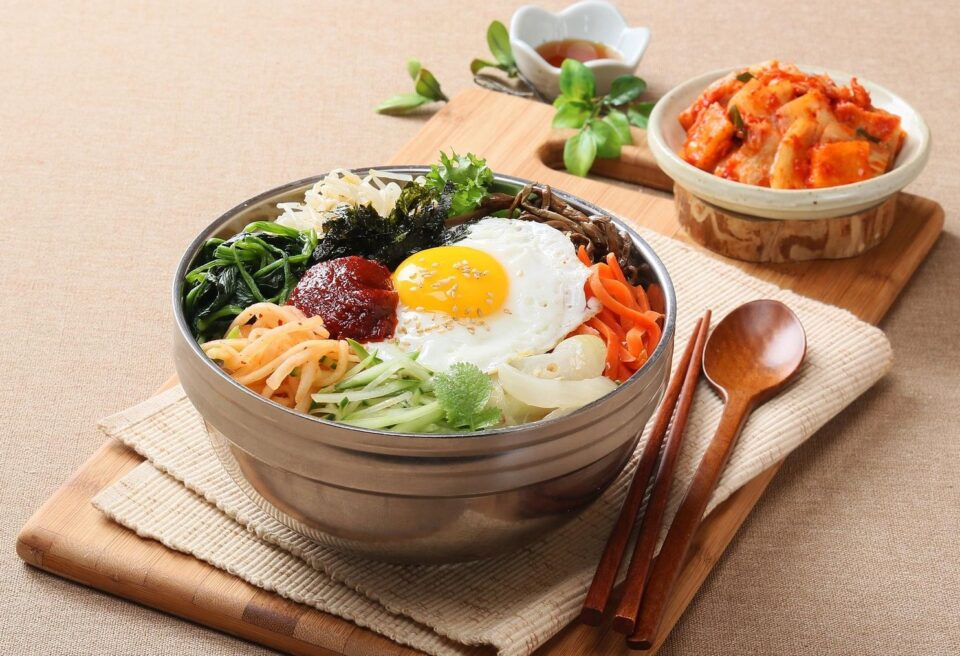Though they are famous condiments from Korean cuisine, the average, non-Korean patron can have trouble differentiating ssamjang vs gochujang. Thanks to the increasing popularity of Korean cuisine, this is a difference that often comes up and can be a bit confusing.
Let’s be honest, you could be excused for not knowing the difference. Ssamjang and gochujang are remarkably similar in taste and in the ingredients that make up these condiments. In fact, several people may not even notice a difference between these two, especially if they’re used as condiments.
However, the differences become clear and evident as we get to the details. For a simple start, you can say ssamjang works as a dip or sauce, sometimes as a paste for several recipes. Gochujang is a spicy, hot ingredient often used in several recipes (like for ssamjang recipes) but also works as a spicy condiment/sauce for other recipes like bibimbap.
Now let’s get to the details to understand the difference between gochujang and ssamjang.
Table of Contents
Ssamjang VS Gochujang – Details And Comparison
Gochujang VS Ssamjang – The Highlights
Let’s get a highlight of the big differences between Ssamjang and Gochujang before going into details.
- Color: Gochujang is usually vibrant or deep red since red chili pepper is the main ingredient. Ssamjang is usually more of an earthy or mild red, where the milder hues of doenjang subdue the deeper hues of gochujang.
- Ingredients: Making gochujang involves fermenting a combination of red chili powder, glutinous rice, fermented soybean powder, malt, and possible other ingredients.
Ssamjang recipe involves a combination of gochujang, doenjang, and other possible ingredients like garlic or toasted sesame seeds. - Taste Notes And Flavor: Gochujang’s main flavor notes are spicy, with hints of sweetness and a touch of salty flavors. Ssamjang has complex flavors, balancing spiciness with umami earthiness, with lighter notes of savory sweetness. By nature of the recipe, gochujang is spicier than ssamjang. Similarly, ssamjang has a stronger and more satisfying umami touch.
Notably, while these are different recipes and offer different flavors, the similarity of their ingredients can allow them to work as substitutes for each other.
In a pinch, you can add some chili powder and perhaps a splash of sweetener like maple syrup or honey to ssamjang and it would be a workable substitute for gochujang.
Gochujang too can be a workable alternative to ssamjang, but it’s not ideal. The higher spiciness and sweetness in gochujang doesn’t really translate all that well to ssamjang recipes.
Understanding Gochujang – What It Is And How It Works With Ssamjang

I’ll start this section with a bit of clarification and history. While it slightly deviates from the topic at hand, it is relevant to our overall discussion in understanding gochujang.
Gochujang And Kochujang – About Language Barriers
When dealing with gochujang, you might sometimes also see the term kochujang. There is no difference in this case. Gojuchang and kochujang are the same. The spelling difference comes from the imperfect translation of Korean characters and language to the western system.
Essentially, kochujang (or rather, koch’ujang) comes from the old McCune–Reischauer romanization for Korean that was introduced in 1939. Gochujang comes from the Revised Romanization of Korean devised by the South Korean government and introduced in the year 2000.
As things stand, the Revised Romanization is more popular for translation/transcription from Korean to English. However, the older McCune–Reischauer romanization still continues to be used and has been used for an overall longer time. As such, some variation is natural and acceptable.
Gochujang – The Red Chili Paste
Gochujang is a red chili paste that is amongst the most famous ingredients of Korean cuisine. The name is pretty much a direct translation – gochu means chili pepper and jang means paste.
It is savory, sweet, and of course, spicy. And this little change in the flavor profile goes a long way in the uses and complex tastes that gochujang presents.
Gochugaru, a red chili powder made using Korean chili pepper, is a key ingredient and responsible for the spiciness in gochujang. Green Korean chili pepper averages at 1500 SHU. The red chili pepper can reach 2000 SHU, which is the mild to medium range on the Scoville scale.
Other ingredients include fermented soybean powder (meju), glutinous rice, salt, malt (usually diastatic barley malt), and water. Variations exist, but this is generally a good representation of the ingredients used.
As you can notice, the focus of conventional gochujang isn’t on being merely spicy and hot, but on balancing several flavors for a more complex taste.

However, hotter versions of gochujang do exist, somewhat driven by the desire to make it spicier. These can be achieved by:
- Adding a larger amount of red chili pepper to the original recipe
- Using alternate, spicier cultivars of red chili. As an example, Cheongyang chili pepper might be used. With SHU at 10,000 this pepper is much hotter than conventional Korean chili pepper. Manufacturers may also use other, hotter peppers to get the spiciness they prefer.
As such, while gochujang is easily available in most places in the USA and Europe, you might want to check the labels to confirm the spiciness of this condiment. Many Korean products can be way too spicy, so checking labels and doing a taste-test might be a good idea for those not very familiar with Korean food.
Ssamjang – The Spicy Dipping Sauce
Ssamjang is a famous condiment from Korean cuisine that works as a dip, sauce, and as a paste. When considering a direct translation, ssam means “to wrap” and jang means “paste”. As such, ssamjang means a paste for wraps.
This also lines up with conventional use of ssamjang, where the paste is applied on lettuce or cabbage leaves, which are then used to wrap small bits of meat or other food. As such, you get a perfect setting to use this condiment and add more flavors to the food.
It can also be used as a dip for the use mentioned above, or even for other food items like fried octopus, thus making it quite a versatile ingredient in Korean cuisine.
Properties And Ingredients Of Ssamjang
Ssamjang is basically a combination of two well-known Korean cuisine condiments or relish, with additional items added for flavor.
A basic recipe includes gochujang and doenjang, with some sesame seeds and garlic. There can be variations to the proportion of the ingredients added, or additional ingredients like green onions or honey might be added to slightly modify the flavor profile. However, the general ingredients usually remain the same.
Ssamjang has something of a peanut butter-like texture. Its color is usually a mild red, with more of an earthy tone, rather than vibrant hues. It’s also quite flavorful, balancing the spiciness of gochujang with the umami earthiness of doenjang, while the other ingredients enhance these flavors.
In the west, it has gained more attention as an ubiquitous ingredient at Korean BBQs, though it has several more uses beyond simply greasing leaves and wraps for meat. It’s quite a versatile ingredient.
Quick Notes On Doenjang (And Doenjang vs Meju)

Doenjang is a key ingredient for Ssamjang. It is a paste made from fermented soybeans.
Now, if you remember, fermented soybeans are also a key ingredient in Gochujang. However, fermented soybeans used for gochujang are called meju.
And herein lies the heart of the matter. Meju is a very important ingredient in Korean cuisine, used in several recipes. However, it is used as an ingredient for other foods, rather than a finished food in its own right.
So, much like meju is an ingredient in gochujang, it is also the base ingredient for doenjang. While I won’t go into the full process, it suffices to say that meju is aged and processed with brine to create the paste that we know as doenjang. Once doenjang is produced, the filtrate of this process can be further boiled and processed to make ganjang, which is a type of Korean soy sauce.
Overall, meju is a basic ingredient for recipes and is used in several parts of Korean cuisine. Gochujang and Doenjang are both well-known condiments that use meju as a base ingredient.
Bringing It All Together For The Ssamjang VS Gochujang Showdown
Now that we’ve gone through the details for this gochujang vs ssamjang comparison, I think it’s fair to marvel at how remarkably similar but meaningfully different these ingredients are. Both these ingredients form key profiles for Korean cuisine and are remarkably complex in flavors.
Ssamjang includes gochujang as one of its main ingredients, yet it goes on to add more complex, savory, and umami flavors to take a more balanced approach. Meanwhile, gochujang revels in its spiciness, but often avoids going overboard. It does a remarkably good job at managing its spiciness along with the sweet notes.

